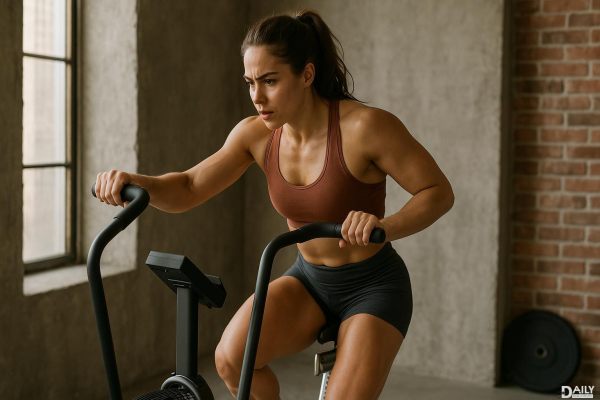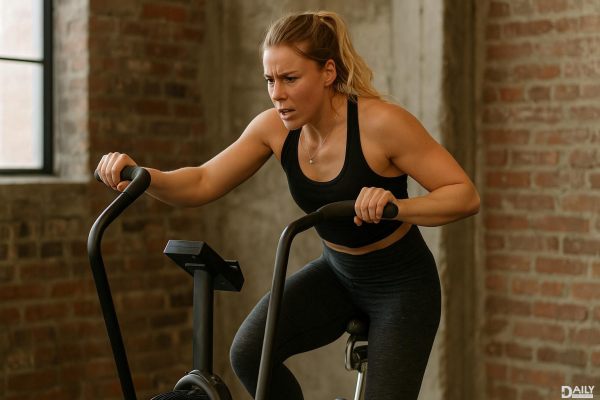Starting a weightlifting routine can feel like stepping into a whole new world—especially if you're used to cardio or haven't touched a dumbbell since high school gym class. But here's the good news: lifting weights doesn’t have to be intimidating, and you don’t need to bench press a small car to see results. This beginner-friendly plan is designed to ease you into strength training with simple, effective movements that build confidence alongside muscle. Whether you're working out in a crowded gym or your living room, this one-week blueprint will help you get stronger without overcomplicating things.
Why Weightlifting Matters (Even If You’re Not Trying to Get Jacked)
basically, it’s a multitasking powerhouse. And no, you won’t accidentally turn into the Hulk overnight. Building noticeable muscle takes time, consistency, and way more protein shakes than you’d think.
Gear Up: What You’ll Need
You don’t need a full home gym to start. A pair of medium-weight dumbbells (start with 5–15 lbs depending on your strength level), a mini resistance band, and a non-slip mat are enough. Pro tip: If dumbbells are sold out (again), water bottles or canned goods work in a pinch. The band is great for activating muscles during warm-ups or adding resistance to bodyweight moves. Oh, and wear shoes with decent grip—trust us, socks on hardwood floors during lunges are a disaster waiting to happen.
Day 1: Lower Body Foundation
We’re kicking things off with legs because, let’s be real, nobody skips leg day on purpose (right?). Start with bodyweight squats to nail your form: feet shoulder-width apart, chest up, and lower until your thighs are parallel to the ground. Then grab those dumbbells for goblet squats—hold one at your chest to add resistance. Follow up with reverse lunges (10 per leg) and finish with calf raises. If you’re feeling spicy, toss in the resistance band above your knees during squats to fire up your glutes. Cool down with a 5-minute walk and some hamstring stretches.
Day 2: Upper Body Basics
Today’s all about arms, shoulders, and back. Begin with bent-over rows: hinge at your hips, keep your back flat, and pull the dumbbells toward your waist. Next, shoulder presses—start light to avoid straining. Bicep curls and tricep extensions (use one dumbbell with both hands behind your head) round things out. If your wrists feel shaky, drop the weight and focus on control. Fun fact: most beginners overestimate what they can lift, leading to wobbly reps. Embrace the humble starting point!
Day 3: Active Recovery & Core
Not every day needs to be heavy lifting. Today’s focus is core stability and mobility. Planks (start with 20 seconds), bird-dogs, and dead bugs are your MVPs. Add in some cardio—like a brisk walk or light cycling—to keep your heart happy. This is also a great day to foam roll tight spots (looking at you, quads). Remember: recovery isn’t laziness; it’s how your muscles rebuild stronger.
Day 4: Full-Body Power
Time to tie it all together. Dumbbell deadlifts (hinge at hips, slight knee bend, weights close to your shins) work your posterior chain. Pair them with push-ups (knees or toes) and weighted step-ups onto a sturdy chair. Finish with farmer’s carries: walk laps while holding dumbbells at your sides to grip strength and posture. If you’re wiped, cut the reps but keep the effort—quality over quantity always wins.
Day 5: Cardio & Flexibility
Mix in 20–30 minutes of low-impact cardio (swimming, dancing, or incline walking). Follow it with dynamic stretches like leg swings and arm circles. This isn’t just filler—it improves circulation and preps your body for next week’s lifts. Bonus: it’s a mental reset button if lifting feels daunting.
Making It Stick: Pro Tips
Consistency beats perfection. If you miss a day, just pick up where you left off. Track your progress (notes on your phone work) to celebrate small wins, like adding 2 lbs or nailing your form. And hydrate like it’s your job—muscles are 75% water, and cramps are nobody’s friend. After four weeks, tweak weights or try advanced variations (like single-leg deadlifts) to keep growing.
Bottom line? Weightlifting is a journey, not a sprint. This plan is your first step—one that’s flexible enough to adapt as you get stronger. So grab those dumbbells, play your hype playlist, and remember: every lifter started exactly where you are now.
























